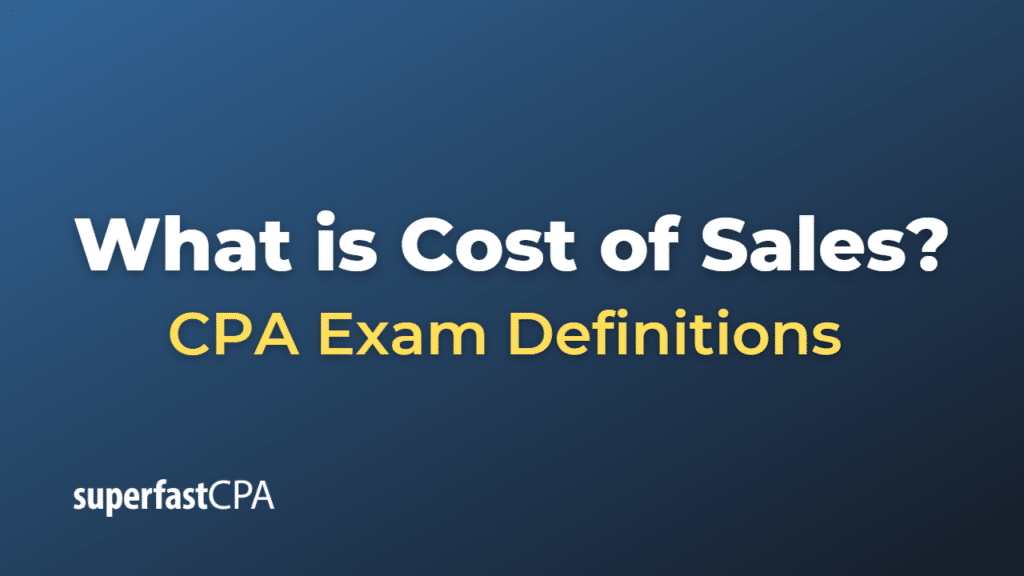Cost of Sales
The cost of sales, also known as cost of goods sold (COGS), is the total cost of all the goods or services sold by a company during a specific period. It includes the cost of the direct labor used to produce the good, direct materials costs, and any other direct costs associated with the production of goods sold by a company. It does not include indirect expenses like distribution costs, sales force costs, or advertising expenses.
In a retail or wholesale business, the cost of sales is likely to be the amount paid for the goods that are sold, plus any additional costs necessary to get the merchandise into inventory and ready for sale, including shipping and handling.
In a manufacturing business, the cost of sales is composed of both variable and fixed costs. Variable costs include raw materials, labor, and utilities, while fixed costs cover depreciation of the production facilities and machinery.
The cost of sales is deducted from a company’s revenue to determine its gross profit. The lower the cost of sales, the higher the gross profit, and by extension, the gross margin.
For example, if a company earns $1 million in revenue and has $600,000 in cost of sales, its gross profit is $400,000 and its gross margin is 40% ($400,000 / $1 million).
Example of Cost of Sales
let’s consider a hypothetical business: a bakery.
Here’s a simple breakdown of the bakery’s sales and costs for a month:
- Revenue: The bakery sells 10,000 loaves of bread at $3 each. This results in total revenue of $30,000.
- Cost of Sales: The cost of sales for the bakery includes:
- The cost of flour, yeast, salt, and any other ingredients used to make the bread.
- The cost of direct labor, which includes the wages of the bakers and other staff directly involved in producing the bread.
- Any other direct costs associated with the production process, like the electricity used to power the ovens.
Let’s say the cost of ingredients per loaf is $0.50, the labor cost per loaf is $0.70, and other direct costs per loaf amount to $0.30. Therefore, the total cost of sales per loaf is $1.50.
For 10,000 loaves, the total cost of sales would be $1.50 * 10,000 = $15,000.
- Gross Profit: The bakery’s gross profit can be calculated by subtracting the cost of sales from the revenue:
Gross Profit = Revenue – Cost of Sales
= $30,000 – $15,000
= $15,000
So, the bakery’s gross profit for the month is $15,000. This amount is before deducting other operating expenses like rent, utilities, administrative costs, etc.
By understanding its cost of sales, the bakery can identify opportunities to increase its gross profit, such as negotiating lower prices for ingredients or improving labor efficiency.













